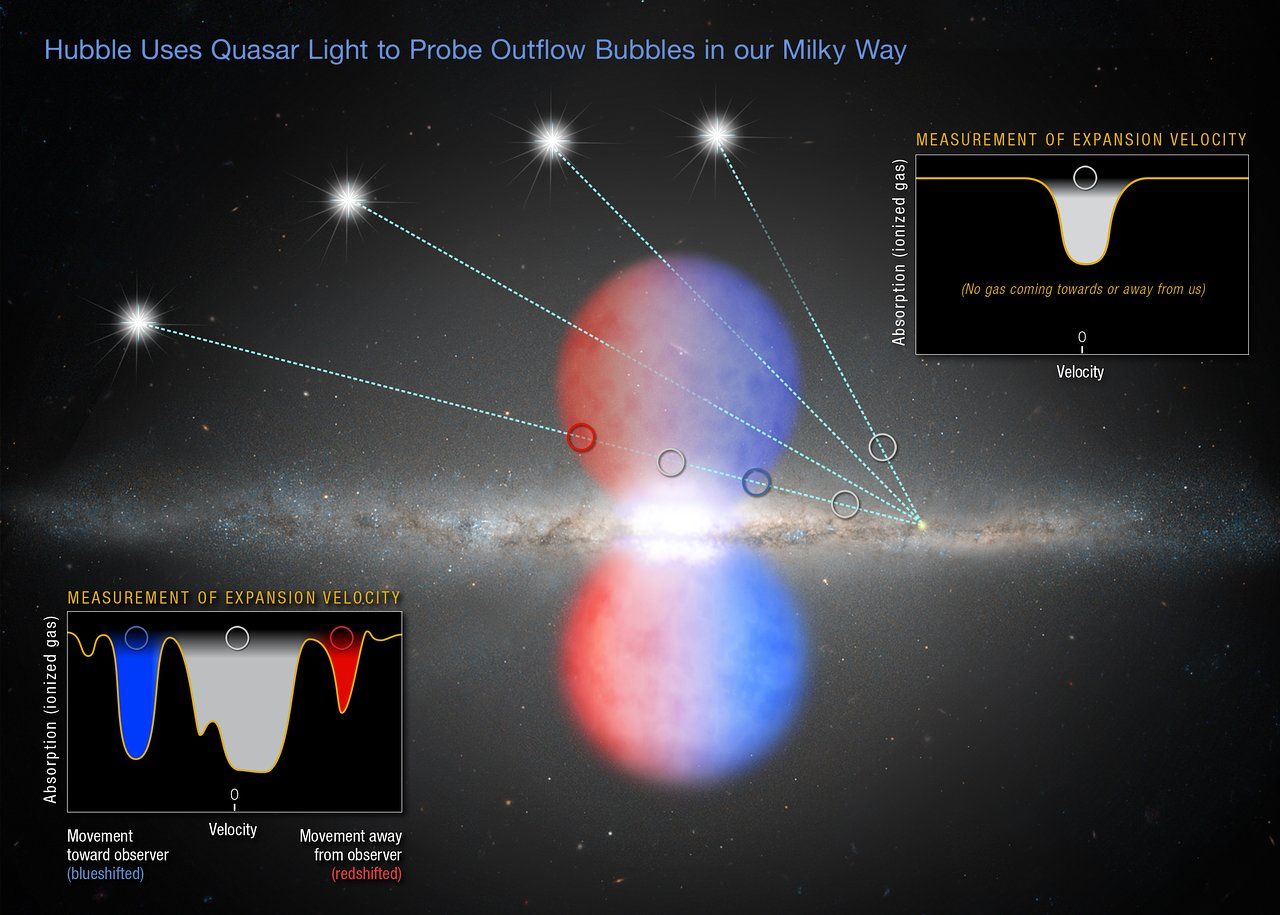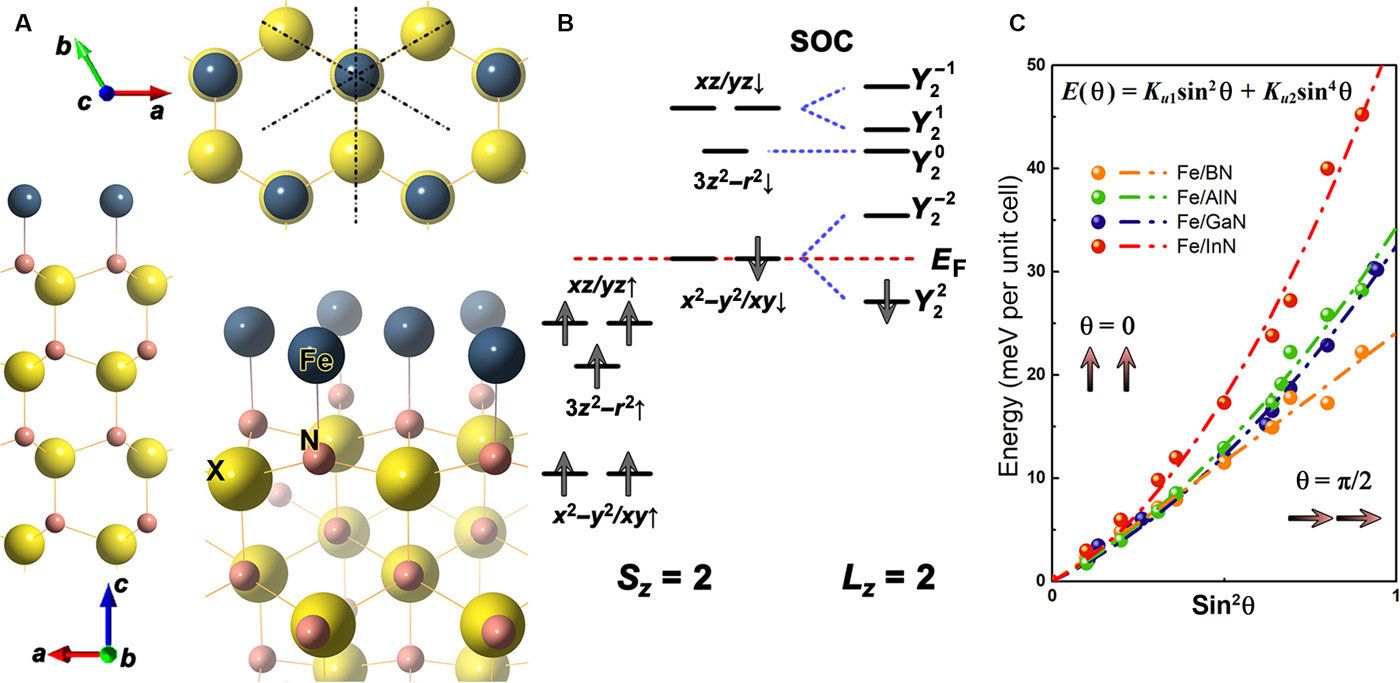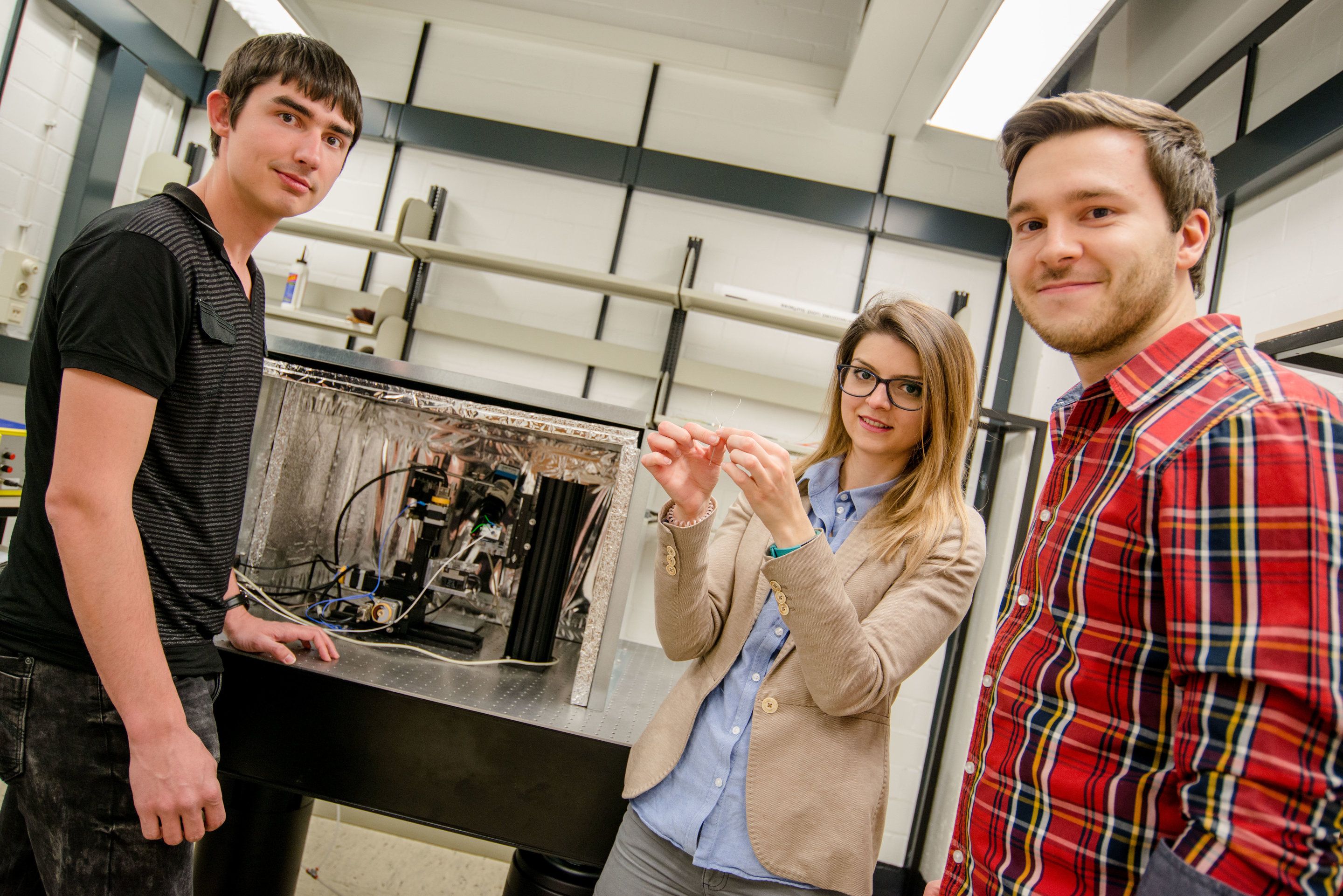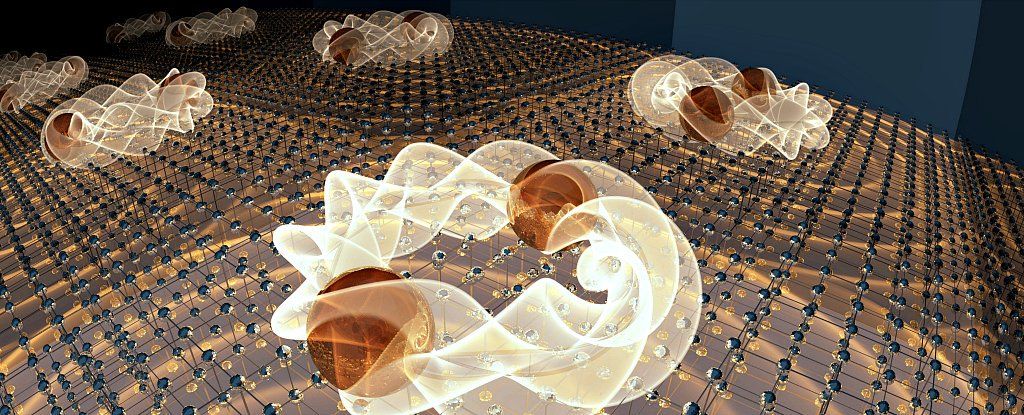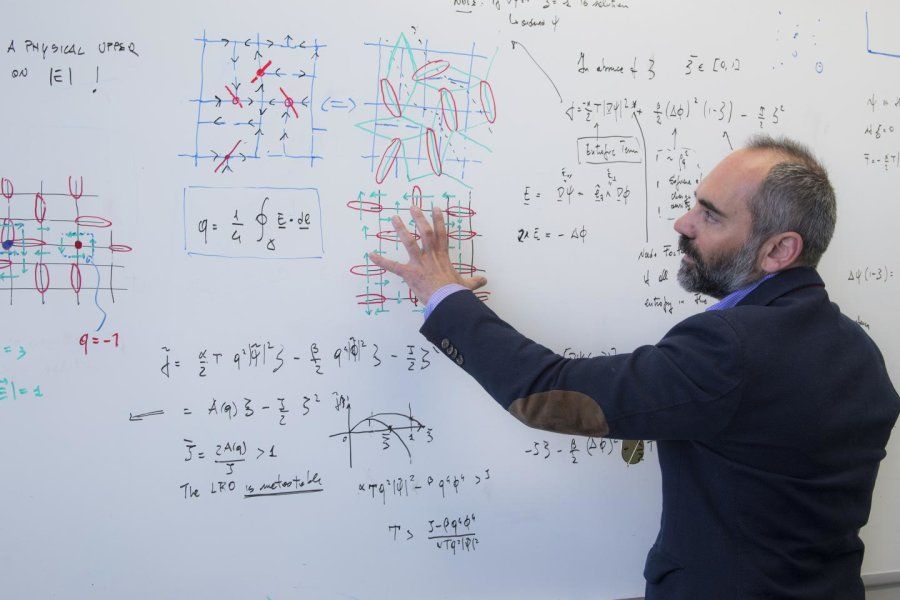Archive for the ‘materials’ category: Page 241
Apr 18, 2018
Team develops sodium ion batteries using copper sulfide
Posted by Bill Kemp in categories: materials, mobile phones
A KAIST research team recently developed sodium ion batteries using copper sulfide anode. This finding will contribute to advancing the commercialization of sodium ion batteries (SIBs) and reducing the production cost of any electronic products with batteries.
Professor Jong Min Yuk and Emeritus Professor Jeong Yong Lee from Department of Materials Science and Engineering developed a new anode material suitable for use in an SIB. Compared to the existing anode materials, the copper sulfide anode was measured to exhibit 1.5 times better cyclability with projected 40 percent reduction in cost.
Lithium-ion batteries (Li-ion batteries or LIBs) are widely used in mobile phones and other personal electronics. However, large-scale energy storage systems require less expensive, more abundant materials. Hence, a SIBs have attracted enormous attention for their advantage over lithium-based batteries.
Apr 16, 2018
Quasar’s light yields clues to outflow
Posted by Genevieve Klien in categories: cosmology, materials
This artist’s impression shows the light of several distant quasars piercing the northern half of the Fermi Bubbles, an outflow of gas expelled by the supermassive black hole in the centre of the Milky Way. The NASA/ESA Hubble Space Telescope probed the quasars’ light for information on the speed of the gas and whether the gas is moving toward or away from Earth. Based on the material’s speed, the research team estimated that the bubbles formed from an energetic event between 6 million and 9 million years ago.
The inset diagram at bottom left shows the measurement of gas moving toward and away from Earth, indicating the material is traveling at a high velocity.
Hubble also observed light from quasars that passed outside the northern bubble. The box at upper right reveals that the gas in one such quasar’s light path is not moving toward or away from Earth. This gas is in the disc of the Milky Way and does not share the same characteristics as the material probed inside the bubble.
Apr 14, 2018
Scientists Just Achieved The World’s Most Precise Chemical Reaction
Posted by Genevieve Klien in categories: materials, particle physics
Scientists have just performed the world’s most precisely controlled chemical reaction, sticking together just two atoms from elements that wouldn’t normally form a molecule.
The two elements — sodium and caesium — produced an interesting alloy-like molecule. On top of that, this method of creation could set the way of making just the kind of materials we might need in future technology.
A team of Harvard University scientists used laser ‘tweezers’ to manipulate individual atoms of the two alkali metals into close proximity, and provided a photon to help them bond into a single molecule.
Continue reading “Scientists Just Achieved The World’s Most Precise Chemical Reaction” »
Apr 13, 2018
Researchers find combination for small data storage and tinier computers
Posted by Bill Kemp in categories: computing, materials
It may sound like a futuristic device out of a spy novel, a computer the size of a pinhead, but according to new research from the University of New Hampshire, it might be a reality sooner than once thought. Researchers have discovered that using an easily made combination of materials might be the way to offer a more stable environment for smaller and safer data storage, ultimately leading to miniature computers.
“We’re really optimistic about the possibilities,” said Jiadong Zang, assistant professor of physics. “There is a push in the computer industry toward smaller and more powerful storage, yet current combinations of materials can create volatile situations, where data can be lost once the device is turned off. Our research points to this new combination as a much safer option. We’re excited that our findings might have the potential to change the landscape of information technology.”
In their study, recently published in the journal Science Advances, the researchers outline their proposed combination which would allow for a more stable perpendicular anisotropic energy (PMA), the key driving component in a computer’s RAM (random-access memory) or data storage. The material would be made up of ultrathin films, known as Fe monolayers, grown on top of non-magnetic substances, in this case X nitride substrate, where X could be boron, gallium, aluminum or indium. According to the research, this combination showed anisotropic energy would increase by fifty times, from 1 meV to 50 meV, allowing for larger amounts of data to be stored in smaller environments. There is a provisional patent pending which has been filed by UNHInnovation, which advocates for, manages, and promotes UNH’s intellectual property.
Apr 11, 2018
Robust and inexpensive catalysts for hydrogen production
Posted by Bill Kemp in categories: energy, materials
Researchers from the Ruhr University Bochum (RUB) and the University of Warwick were able to observe the smallest details of hydrogen production with the synthetic mineral pentlandite. This makes it possible to develop strategies for the design of robust and cost-effective catalysts for hydrogen production. The working groups of Prof. Wolfgang Schuhmann and Dr. Ulf-Peter Apfel from the RUB and the team headed by Prof. Patrick R. Unwin from the University of Warwick published their results in the journal Angewandte Chemie.
Hydrogen gas is considered a possible future source of energy and can be produced from water using platinum catalysts and electricity. However, researchers seek alternative catalysts made of cheaper and more readily available materials with equally high efficiency. There are a number of materials that, like platinum, are able to catalyse the reaction of water into hydrogen. “These include metal chalcogenides such as the mineral pentlandite, which is just as efficient as platinum and is also significantly more stable toward catalyst poisons such as sulphur,” explains Ulf-Peter Apfel. Pentlandite consists of iron, nickel and sulphur. Its structure is similar to that of the catalytic centres of hydrogen-producing enzymes found in a variety of sources, including green algae.
In the current study, the researchers investigated hydrogen production rates of artificially prepared crystalline surfaces of the mineral pentlandite in a drop of liquid with a diameter of a few hundred nanometres. They used scanning electrochemical cell microscopy for this purpose.
Continue reading “Robust and inexpensive catalysts for hydrogen production” »
Apr 8, 2018
Physicists Just Discovered an Entirely New Type of Superconductivity
Posted by Genevieve Klien in categories: materials, physics
One of the ultimate goals of modern physics is to unlock the power of superconductivity, where electricity flows with zero resistance at room temperature.
Progress has been slow, but physicists have just made an unexpected breakthrough. They’ve discovered a superconductor that works in a way no one’s ever seen before — and it opens the door to a whole world of possibilities not considered until now.
In other words, they’ve identified a brand new type of superconductivity.
Continue reading “Physicists Just Discovered an Entirely New Type of Superconductivity” »
Apr 3, 2018
Now, there’s an injectable bandage that can heal fatal internal injuries
Posted by Shane Hinshaw in categories: biotech/medical, materials
Given the high mortality rates due to hemorrhaging, there is an unmet need to quickly self-administer materials that prevent fatality due to excessive blood loss.
Apr 3, 2018
Novel Hydrogel-Based Solar Vapor Generator Yields Clean Drinking Water
Posted by Bill Kemp in category: materials
Finding a cheap and effective water purification process would have global implications.
A research team from the University of Texas at Austin’s Cockrell School of Engineering has developed a new cost-effective and compact technology that combines gel-polymer hybrid materials to improve the purification process for drinking water.
The new materials possess both hydrophilic—an attraction to water—qualities and semiconducting, or solar-absorbing properties. This enables the hydrogel to produce clean, safe drinking water from virtually any source, whether it’s from the oceans or contaminated supplies.
Continue reading “Novel Hydrogel-Based Solar Vapor Generator Yields Clean Drinking Water” »
Apr 2, 2018
Finding order in disorder demonstrates a new state of matter
Posted by Genevieve Klien in categories: materials, quantum physics
Physicists have identified a new state of matter whose structural order operates by rules more aligned with quantum mechanics than standard thermodynamic theory. In a classical material called artificial spin ice, which in certain phases appears disordered, the material is actually ordered, but in a “topological” form.


